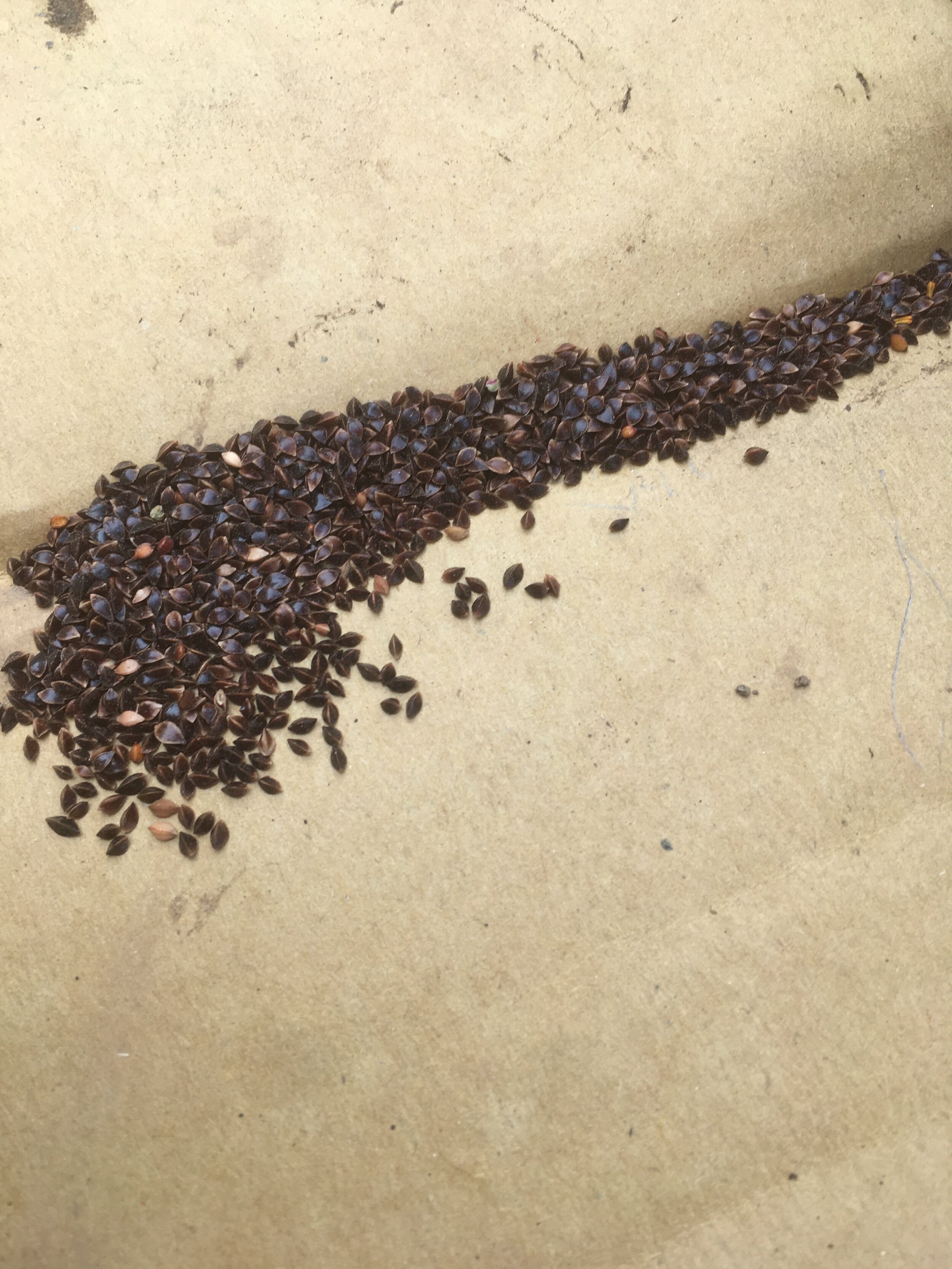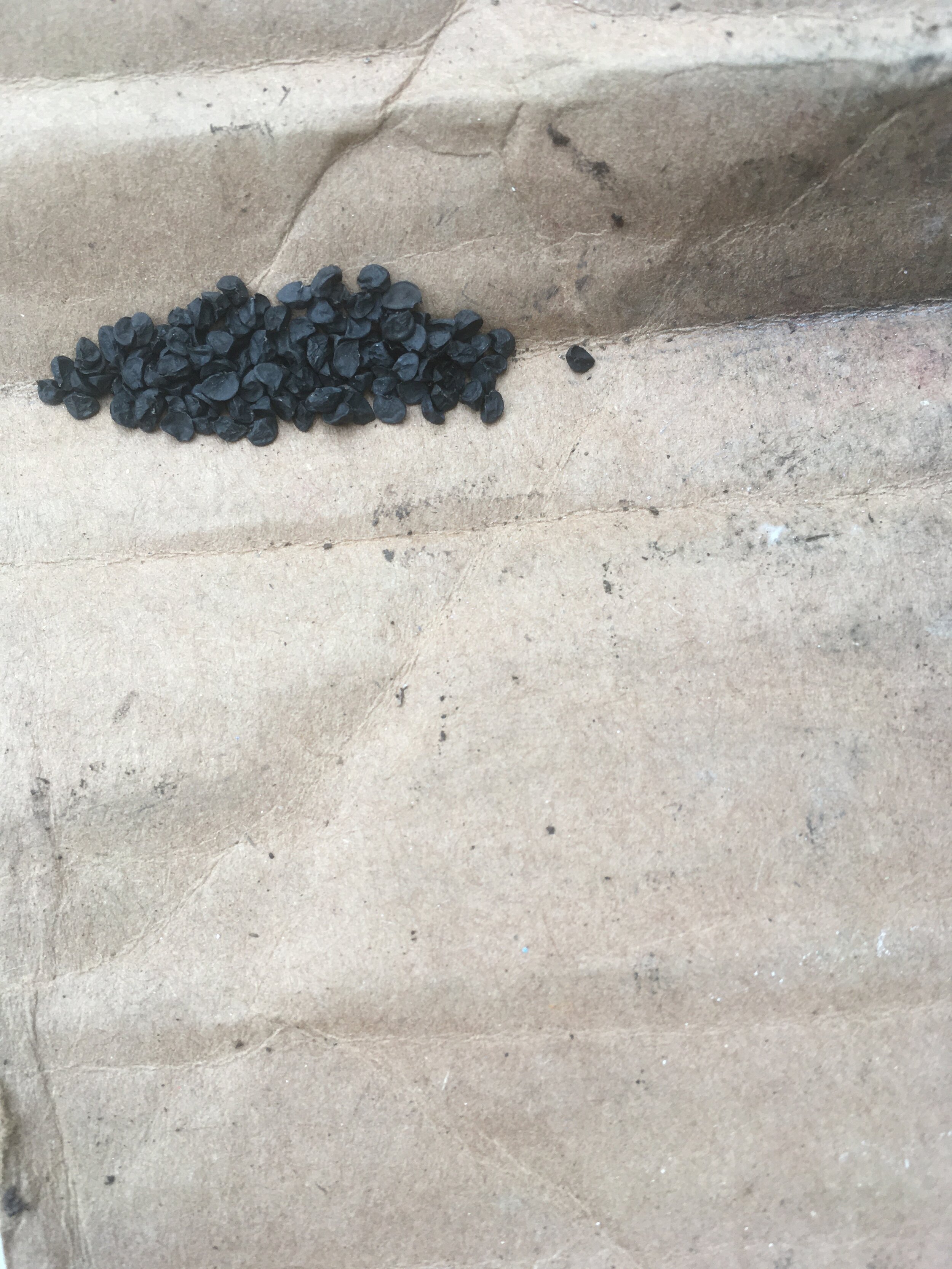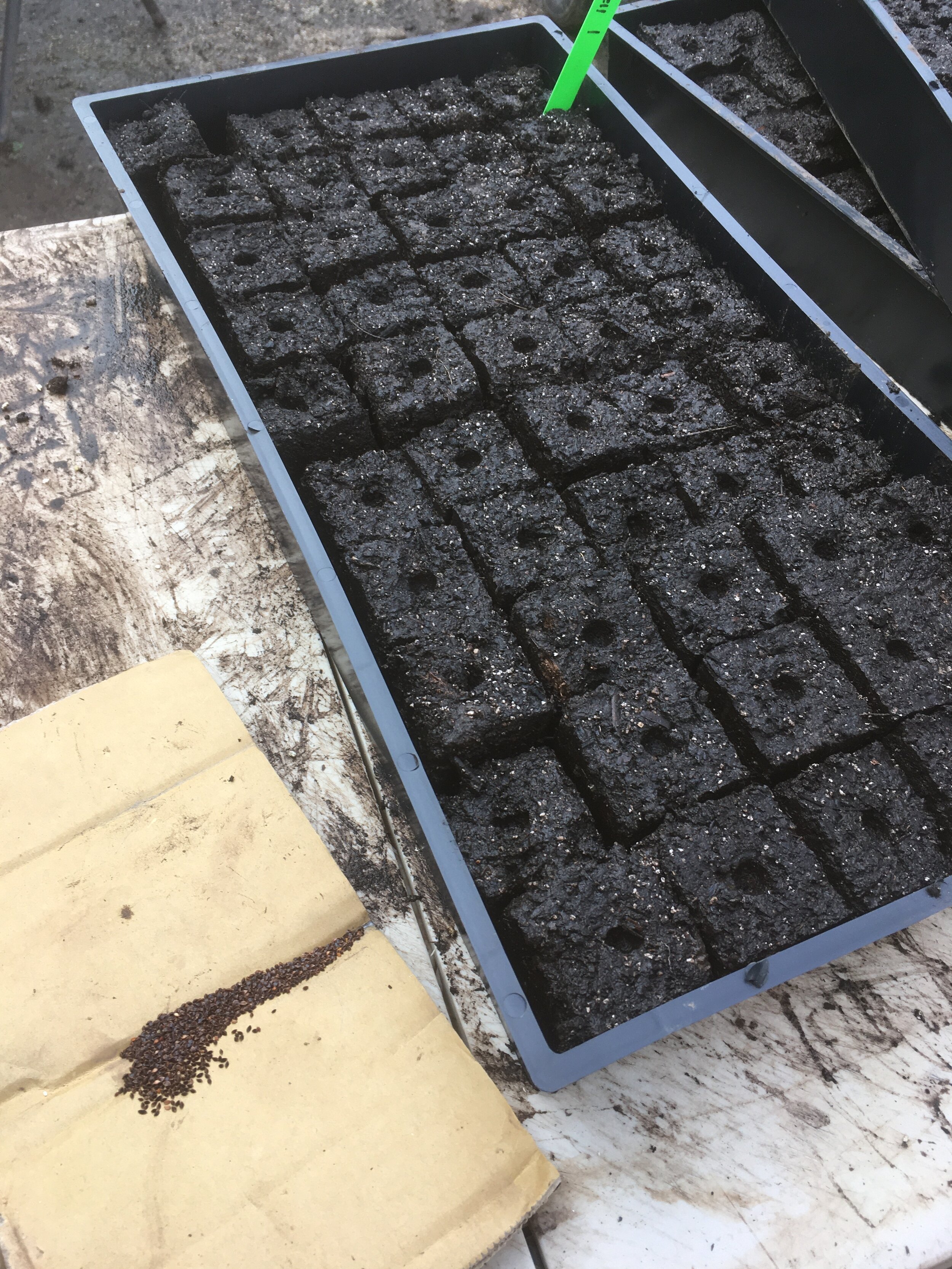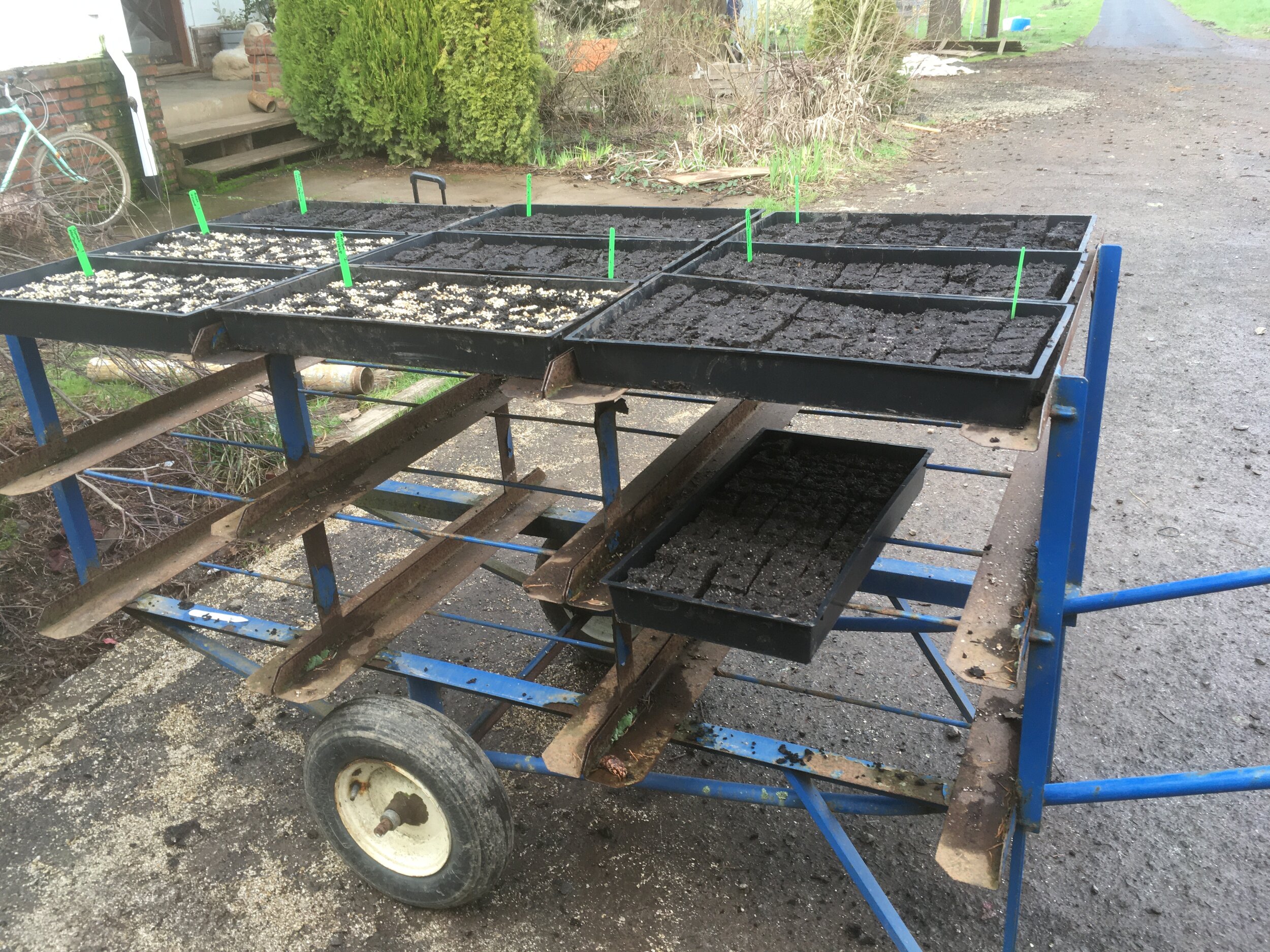Escribiendo desde el comienzo de junio, pero se siente que unos momentos atrás, era Abril. No se como paso el tiempo tan rápido, pero la huerta se ve muy diferente desde cuando empezamos formar camas y plantar ensaladas y brassicas. Now we have potato leaf growth, 15 rows of strawberries interplanted with lupines, y espinaca, cebollitas, orach, remolachas y zanahorias, y cilantro. Tomatoes, basil, dry farmed Oaxacan Green corn and Tepary and Whipple Beans, and cucurbits are in the ground and growing. Flowers are beginning to bloom, y muchas mas se van a plantar en las semanas que vienen. Estamos contentxs, watching all the plants successfully doing what they’re supposed to do.
In the photo above, you can see our tomato field, next to the strawberries, followed by the potatoes and behind those, are the blueberries. We have interplanted basil, lettuce, zinnias, parsley, amaranth, beets and carrots along the sides of our tomato rows, making them more productive and diverse spaces for growing. Not pictured is the enormous bald eagle who greeted us this morning and watched us for several hours, sitting on a treetop. I found their presence comforting, and I hope it eludes to a sign that the surrounding environments are welcoming and conducive to wildlife survival—also it wouldn’t hurt if it hunted moles once and a while. Below you’ll see photos of one of the first berries to ripen on the goumi berry bush, herbs flank the trees and shrubs left and right; salad and spinach beds with pathways built up of burlap sacks (Thanks Donyel and Stumptown for the donations!) and woodchips; and a spiraling garlic scape, a seasonal specialty.
Gracias por leer un poco about what we’ve been up to ~ keep an eye out for information about our upcoming screening of Camila Freitas’ film Chão/Landless on June 25, 2021.












